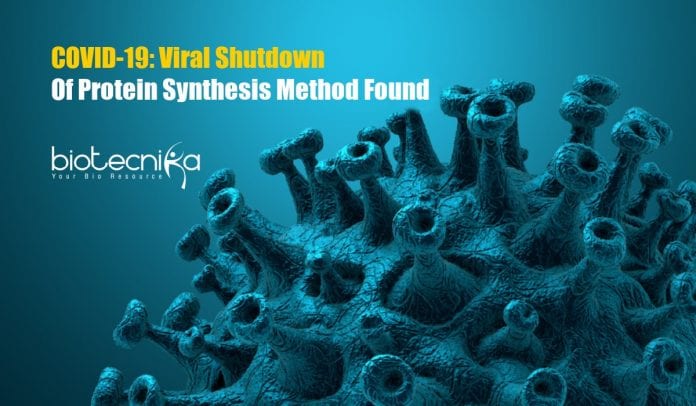COVID-19’s Viral Shutdown
of Protein Synthesis Method Found
Scientists Identify COVID-19 Viral Shutdown of Protein Synthesis Method
The method of SARS-CoV-2 inhibiting the protein synthesis in infected cells and how the virus disarms the body’s innate immune system effectively has been determined by the researchers from Munich and Ulm.
The Nonstructural Protein 1 (Nsp1) encoded by the coronavirus SARS-Cov-2 has now been shown to have a devastating effect on host cells. To ensure the virus’s own replication and propagation in human hosts, Nsp1 is in fact one of the central weapons used by the virus. Following the outbreak of the related SARS coronavirus nearly 20 years ago, Nsp1 was identified as a virulence factor when it was shown to inhibit protein synthesis in infected cells. What makes Nsp1 so potent has now been discovered by researchers based at Ulm University Hospital and Ludwig-Maximilians-Universitaet (LMU) in Munich. They describe the protein’s mode of action in detail in a paper that appears in the journal Science.
Complex molecular machines known as ribosomes perform the task of synthesizing proteins in all biological cells. Ribosomes interact with messenger RNAs (mRNAs), and mRNAs translate the nucleotide sequence of
each mRNA into the amino-acid sequence of the corresponding protein and serve as blueprints for protein synthesis. The shape and biological function of each individual protein are in turn determined by the amino-acid sequence. Nsp1 binds to the 40S subunit, the smaller subunit of two distinct subunits of ribosomes.In the new study, one end of the Nsp1 protein was seen to interact with the 40S subunit in such a way that the binding of the mRNA is prevented. Three-dimensional detail of how Nsp1 inhibits the formation of functional ribosomes and binds tightly to a specific pocket in the small ribosomal subunit is shown by Professor Roland Beckmann and his colleagues at the LMU Gene Center with the help of high-resolution cryo-electron microscopy. With specific configurational states of the fully assembled ribosome, Nsp1 was seen to interact, through further experiments.
Additionally, the shutdown of protein synthesis leading to an almost complete collapse of one of the body’s major lines of defense against the virus was shown by the team led by Konstantin Sparrer at Ulm University Hospital. By inhibiting a vital signaling cascade, Nsp1 inactivates the innate immune response. The study authors hope that the severity of the respiratory disease caused by the COVID-19 virus can be mitigated by finding ways to neutralize the novel coronavirus with the help of the insights gained in the study. They said that developing a molecule that can mask the binding site of the viral protein could be one potential approach. In ribosomal function, the Nsp1-binding pocket appears not to have an essential role, thus this approach should be feasible.






























